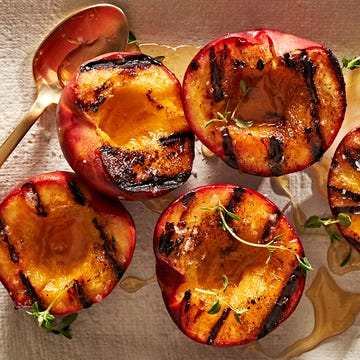1Make Gravlax
 Courtesy of POPSUGAR
Courtesy of POPSUGAR Follow along with our step-by-step guide to preparing gravlax at home.
2Remove the Pin Bones
 Courtesy of POPSUGAR
Courtesy of POPSUGARInspect the salmon both visually and with your fingertips to find any pin bones — small, flexible bones that are sometimes overlooked by the fishmonger — and remove them with a pair of (clean) tweezers.
Advertisement - Continue Reading Below
3Set Up the Curing Process
 Courtesy of POPSUGAR
Courtesy of POPSUGARSpread about half of the curing mixture on the bottom of the dish that will house the salmon while it cures. Nestle the salmon on top, skin-side down.
4Top Off with Dill Fronds
 Courtesy of POPSUGAR
Courtesy of POPSUGARTop the salmon with the rest of the curing mixture and the remaining dill fronds.
Advertisement - Continue Reading Below
5Apply Pressure
 Courtesy of POPSUGAR
Courtesy of POPSUGARFor firmer gravlax, loosely cover the dill-topped salmon with plastic wrap, top it off with another equal-size (or smaller) baking dish, and weigh it all down with canned goods, pie weights, or loose change.
6Let the Salmon Cure
 Courtesy of POPSUGAR
Courtesy of POPSUGARLet the salmon cure (refrigerated) for at least three days, flipping the salmon and basting it with the juices that have collected roughly every 12 hours. The flesh will be firmer, darker, and more intensely colored (as pictured) when it's ready to be sliced and served.
Advertisement - Continue Reading Below
7Slice the Gravlax
 Courtesy of POPSUGAR
Courtesy of POPSUGARRinse the gravlax to remove the curing mixture, pat it dry, and set it on a cutting board. Split the fillet in half along the center indent to make it easier to work with. For each half, start slicing the gravlax on a bias by slicing off a small chunk at an angle. Then, slice it as thinly as you can manage at that angle through the remainder of the fillet.
8Serve It Up!
 Courtesy of POPSUGAR
Courtesy of POPSUGARAdmire your handiwork — not many can say that they've home-cured fish. Serve the slices with crème fraiche and nutty crackers; with bagels, cream cheese, capers, and tomato; on top of a green salad; or however best pleases your palate.
Advertisement - Continue Reading Below
9More from POPSUGAR
 Courtesy of POPSUGAR
Courtesy of POPSUGAR Advertisement - Continue Reading Below
Advertisement - Continue Reading Below
Advertisement - Continue Reading Below





















